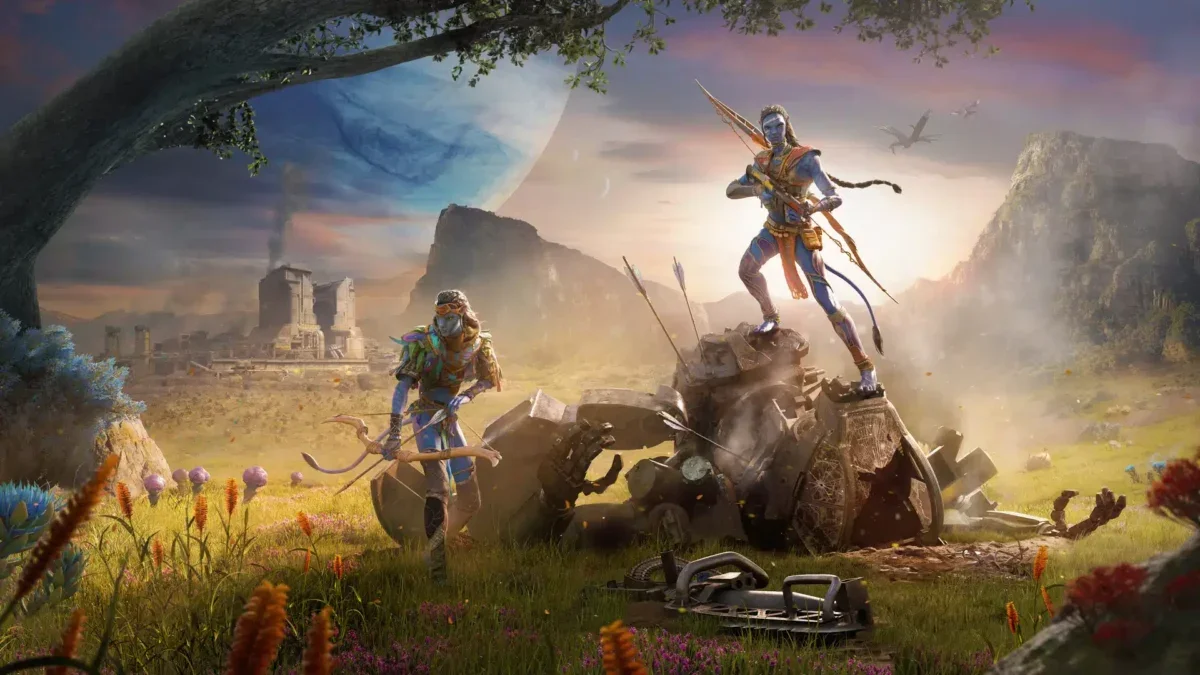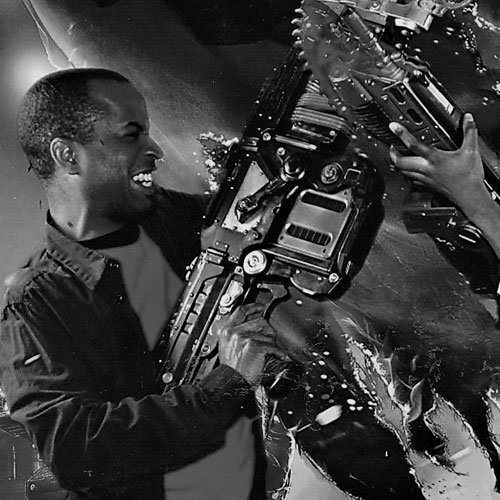A famous Japanese proverb says: “A wise man climbs Fuji once, but only a fool climbs it twice.” The same could be said about visiting the fictional world of Pandora, as Ubisoft’s Avatar: Frontiers of Pandora represents the second attempt by the French publisher to craft a successful videogame tie-in to James Cameron’s Academy Award-winning Avatar film franchise, (it’s first being 2009’s Avatar: The Game). They’ve also chosen to release the game in early December, a decision that might be just in time to capitalize on Christmas holiday sales but also may have allowed recent events like The Game Awards and the reveal of Grand Theft Auto VI to bury its lead.
This time around, however, Ubisoft appears to have every reason to be confident in its sophomore Avatar effort. They have managed to put together a beautiful-looking, triple-A experience that not only closely resembles the look of the films (with Cameron’s ringing endorsement and blessing) but also leverages several of the latest graphical advancements on PC and consoles to achieve it. It also tells a compelling new story within the Avatar canon and expands upon the lore of Pandora. All that being said, however, how does it play?
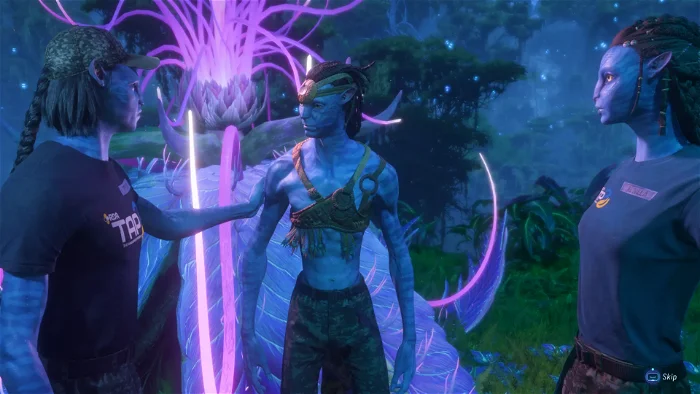
Avatar: Frontiers of Pandora is set in Pandora’s uncharted Western Frontier. It starts eight years before the original Avatar film. The story focuses on five orphaned Na’vi children from the Sarentu clan. This includes the player character, known simply as “Sarentu.” The player can choose to play as either male or female. These children have been raised by humans under TAP (The Ambassador Program). TAP, in turn, answers to the RDA (Resources Development Administration, a.k.a. the military). The children are trained to shun their Na’vi heritage and learn human ways, and are destined to become Na’vi-human ambassadors and soldiers for the RDA.
Two critical events turn everything upside-down, however. First, a callous and tragic action on behalf of the TAP Director meant to keep the children in line during their childhood sows seeds of mistrust that will inevitably sprout in explosive fashion down the line. Then eight years later, the arrival of Jake Sully on Pandora and the Omaticaya Rebellion prompts the RDA to scrub the TAP program, destroy the facility, terminate the now teenage Na’vi and evacuate Pandora.
“Frontiers of Pandora offers a deep dive into the lore of Pandora with a compelling new story, but its gameplay mechanics and navigation issues leave much to be desired.”
Their TAP teacher, Alma, disobeys orders and instead puts the children into cryo-sleep instead, only to return and reawaken them 16 years later as a member of the resistance when the RDA re-invades Pandora during the events of Avatar: The Way of Water. Talk about complicated!
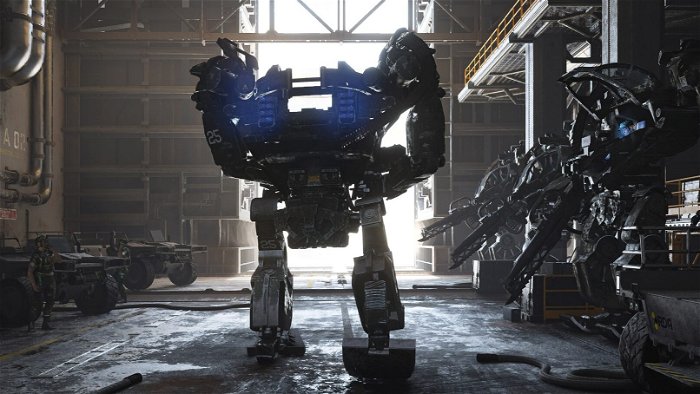
As both a Sarentu descendant and a Na’vi living out of time, Sarentu must learn and reacquaint themselves in the ways of the Na’vi people, which sets up a brilliant excuse for players to relive the adventures, trials and even some of the tribulations that Jake Sully experienced in Avatar, but this time through active gameplay, rather than passive viewing.
In Avatar: Frontiers of Pandora, players will also interact with characters from other Western Frontier Na’vi clans, such as The Zeswa, The Aranahe, and the Kame’tire, as well as the local human resistance, who are primarily made up of defected TAP and RDA members. Seeing the lore of Avatar expanded upon in this way via a connected yet brand-new standalone story is quite fascinating, especially if backstory is your thing.
That being said, Avatar: Frontiers of Pandora takes an exceptionally long time to get to the good stuff, and while what’s there is significant, isn’t always that engaging. By the time that I finally gained access to my own Ikran (Banshee) and could fly to locations rather than climbing and huffing it on foot, I had already sunken well over 13 hours into the game, and a good chunk of that was spent floundering around lost thanks to the abysmal navigation system (more on that later). A lot of that time was also gobbled up by excessive conversation with Na’vi and human quest-givers whose goals were no doubt important, but were otherwise uninteresting to listen to.
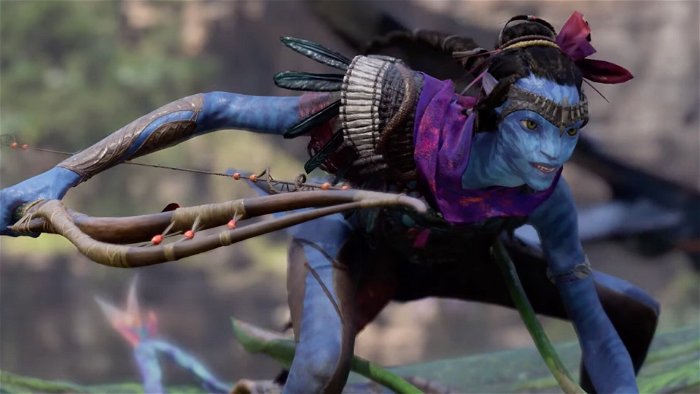
While I certainly agree with my CGM colleague Zubi that the gameplay mechanics of the Far Cry franchise make for a perfect pairing with Avatar on paper, in the case of Avatar: Frontiers of Pandora this only extends as far as the hunter-gatherer elements that were introduced in Far Cry 3. For example, players can forage or hunt the local flora and fauna for food and ingredients. These can either be consumed directly or can be cooked into more substantial meals that restore health or provide significant buffs.
Interestingly, Avatar: Frontiers of Pandora takes a page out of Red Dead Redemption 2’s playbook, requiring players to use Na’vi weapons such as arrows or spears to target weak points and ensure clean kills when taking down prey, or pick plants in a particular manner to avoid damaging them, thus preserving their quality. Ruined meat (e.g., meat riddled with bullets) can’t be used or consumed at all, while damaged ingredients will yield lower quality buffs when eaten or cooked.
“While the game beautifully recreates the lush world of Pandora, it struggles to deliver a gameplay experience that matches the agility and power expected of a Na’vi warrior.”
Avatar: Frontiers of Pandora also lifts hunting and looting elements from The Witcher 3: Wild Hunt, allowing players track other wildlife by scent and drop custom pins on the map to label places that players might want or need to return to for resources. Sometimes players will even have to channel their inner Geralt of Rivia and use their keen Na’vi senses to solve the occasional mystery!

Regrettably, Avatar: Frontiers of Pandora handles just about every other element of the Far Cry games worse, and there aren’t enough original elements imported from the Avatar films to compensate for them. First of all, Sarentu’s Na’vi senses serve largely as a poor-man’s Batman Detective Mode, allowing you to see the main objective waypoint, items of interest, scent trails of other wildlife, the living auras of friends and foes, and even the energy signatures of RDA vehicles and weapons.
The problem here is that using one’s Na’vi senses is also the only way to see the main objective waypoint outside of the game’s map, and only within a limited reticle where Sarentu’s Na’vi vision is strongest. I’ll get into how problematic this shortly, but for now, just know that’ it’s bad.
Then there’s the combat. Taking out RDA installations will be the primary way in which players will encounter enemy forces, and it won’t take long before they recognize the telltale signs of the game’s abysmal enemy AI, like individual mechs and soldiers running around in circles, or entire groups of forces all standing in place pointed towards your last known location, ready to fire at you should you be foolish enough to poke your head out for more than a second.
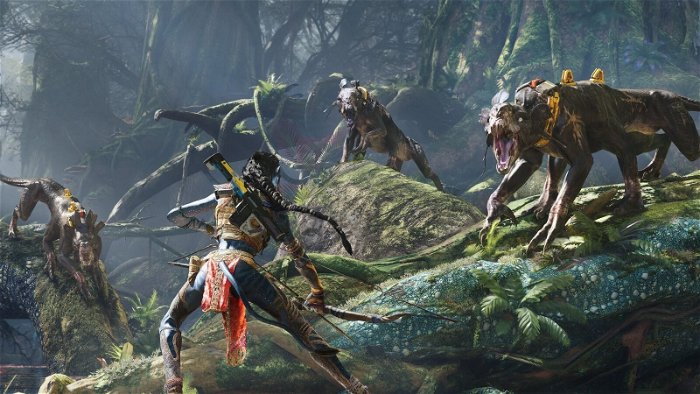
The real challenge in Avatar: Frontiers of Pandora is that the RDA presents the player with is their overwhelming numbers and their annoying collective AI; generally, if one enemy sees you and has enough time to raise the alarm, EVERYONE can then instantly see you and will immediately move to surround you.
Using the resistance-provided SID (Systems Interrogation Device) to temporarily hack mechs makes things a little easier, but strangely, there’s no way to shut down alarm systems in advance like once can in the modern Far Cry games, which makes sneaking around heavily manned RDA facilities a lengthy slog. There’s no way to hack RDA guns to target enemies either.
To be brutally honest, Avatar: Frontiers of Pandora’s gameplay falls well short of its potential in many aspects, and at least in my estimation, nothing in the game “feels” quite as it should, especially for a game in which you control a 10-foot-tall cat-person that can scale trees and tall rockfaces with ease, run across large vines effortlessly, and fell their enemies and prey alike with arrows, spears and other seemingly primitive weapons in addition to human made ones.

Instead, Sarentu’s jumps feel heavy, even when performing boost jumps. Their sprint feels slow. The ancestor skill “Air Boost” (effectively an air dash) feels more like a reluctant “hop,” and you actually have to look closely to tell that you actually performed the move at all. And bizarrely, while you can scale a mountain, you can’t use human-built ladders…because reasons?
It also doesn’t help that the tree pathing feels helter-skelter. There are plenty of living jump pads and retracting vines that invite players to ascend into the trees and run along their branches, but more often than not those branches lead to dead ends and gulfs that can’t be crossed, killing the momentum necessitating an awkward climb or risky jump back down.
On top of that, there are countless missed opportunities in terms of Na’vi abilities that could have been added to Sarentu’s arsenal, like the ability to slow time during a slide or jump to perform lethal arrow shots more easily (a-la Dying Light 2’s Aiden Caldwell or Neytiri in the Avatar films), or since there’s such an emphasis on hunting, how about a threatening Na’vi “cat-hiss” to scare off remaining viperwolves after you’ve killed off one or more of their pack?
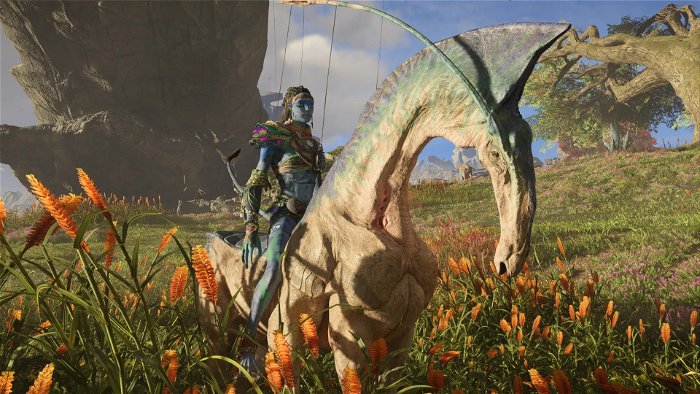
Sarentu’s abilities do indeed become more potent as the narrative advances and more abilities in the skill tree are unlocked, but they are mainly focused around giving Sarentu stronger attacks and or increased percentage gains in passive skills, and far less on unique Na’vi skills.
Don’t get me wrong, the game eventually gives players the ability to dropkick RDA soldiers, yank pilots from stunned or hacked RDA mechs, move peacefully among Pandora’s creatures without alerting them, or enjoy aerial fishing with their Ikran. These are all great ideas in the same vein as those I suggested above, I just wish there were more of them, and that being a Navi felt more nimble, threatening, and powerful.
As a 9th Gen console game, Frontiers of Pandora obviously can’t compare to the level of visual fidelity found in the films, but on Xbox Series X the game surprisingly punches well above its perceived weight regardless, offering both a 30fps Quality Mode and a 60fps Performance Mode. Both modes feature dynamic resolution up to 4K as well as Ray-Traced Global Illumination, a resource-heavy feature that very few games on console even bother to include even today. I personally prefer playing games at 60fps whenever possible, and while the Performance mode tends to suffer from noticeable hitches in action scenes and occasional dropped frames, it’s still better than Quality Mode, which looks much choppier to me overall.
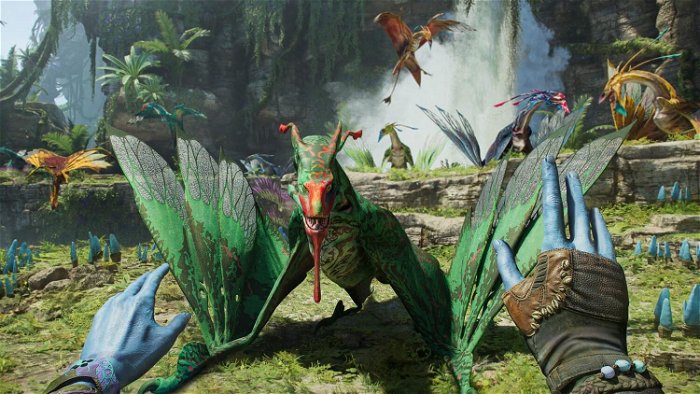
One small annoyance with Avatar: Frontiers of Pandora is that when initially setting up the game for the first time, there is no option to select Performance Mode until after players have customized their Sarentu, meaning that players have no choice but to experience the first 10-20 minutes of the game at 30fps. The game also tends to switch back to Quality Mode following a console shut-down or reset, or sometimes even just a Quick Resume. Hopefully, a bug fix down the line will properly address this, but it’s not a dealbreaker.
Here is the dealbreaker. Navigation in Avatar: Frontiers of Pandora is ATROCIOUS. It’s so bad that I find myself completely at a loss to understand how the developer of countless Far Cry and Assassin’s Creed games could have messed this one up. As I mentioned earlier, the main objective waypoint cannot be seen in the HUD unless you are pointed in the right direction and using Sarentu’s Na’vi senses, and this remains the case even if you have HUD guidance fully enabled in settings. This makes it extremely difficult to pinpoint which direction players should be heading if they want to proceed straight to the next objective but haven’t unlocked fast travel to that area yet.
Thankfully, the player’s ability to place a custom waypoint marker on the map has no such restriction and can be viewed in the HUD as well, so technically one can place the custom marker in the same spot as the objective marker and work around the problem, but why should anyone have to do this in the first place?!? Why not just allow the objective marker to be visible in the HUD but add the ability to remove it for those who want a greater challenge?
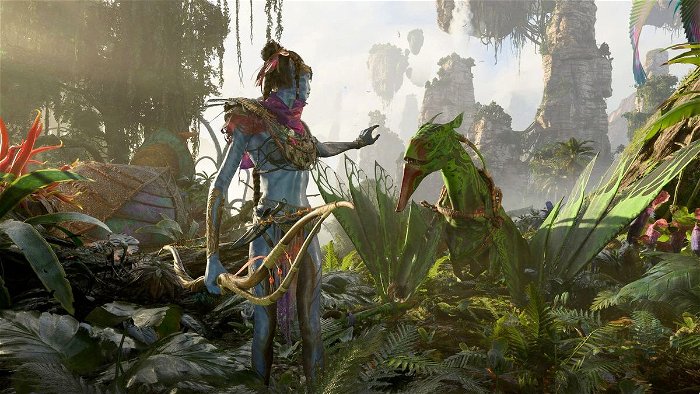
Then there’s the issue of the custom marker not including any sort of elevation information along with its distance from the player, like an arrow indicating whether the waypoint is above or below. This often resulted in me wandering about cluelessly searching for quest givers, items and locations that I was literally right next to but could not see them because the marker was in an underground cave or on top of a mountain.
What’s even more annoying is that the custom marker, distance info and all, will often vanish when the player is within spitting distance of it, making it even easier to lose track of it once you get close, unless the objective is sitting right in front of your face.
Sadly, navigation doesn’t get much better once you gain access to your own Ikran (Banshee) and can fly around; you’ll still find yourself landing on floating islands thinking you’ve reached your destination only to have to take off again and search other islands nearby with no clue how much higher or lower you should go.
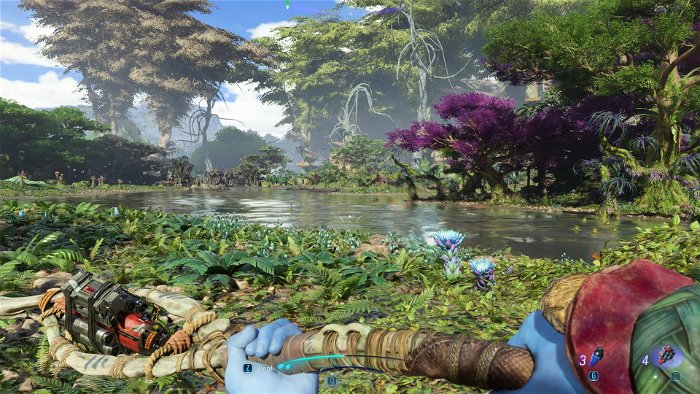
In all seriousness, this issue added hours of frustration and boredom to my play sessions, and probably ate up at least a third of the total time I spent playing Avatar: Frontiers of Pandora early on. That being said, once I bonded with my Ikran “Storm” and was finally able to fly and travel faster across the map, that’s when the game truly opened up and I felt I was playing the game the way it was originally meant to be experienced.
Ultimately, I’m torn over how I feel about Avatar: Frontiers of Pandora. It’s a gorgeous-looking, big, meaty Ubisoft game with an intriguing, original story, new characters to meet, new biomes to explore and a fascinating insight into the lore of Pandora and how the different Na’vi tribes interact. On the other hand, the navigation feels next to broken and controlling Sarentu as an individual feels like playing a serviceable” FPS shooter when it should actually feel amazing and fully embrace the speed, power, and agility of being a Na’vi. Those two aspects alone are significant enough to hold this game back from earning the additional points it truly deserves.
